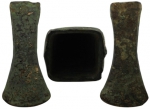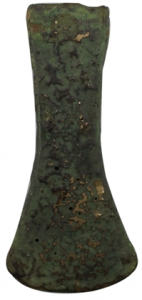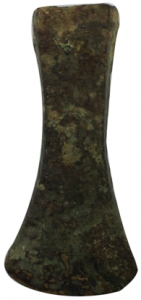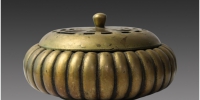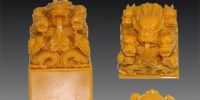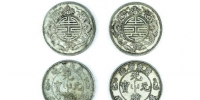四川永合利精品推荐丨战国 铜锛斧
四川永合利拍卖有限公司,为藏品强大的传播效应向各位买家推荐经国家一级鉴定专家甄选的艺术珍品 , 为藏家牵线搭桥 , 让千百件艺术珍品价值被发掘与重视 , 在拍卖会上得以高价成交。
Sichuan Yonghe Li Auction Co., Ltd. For the strong dissemination effect of collections, we recommend to buyers the art treasures selected by experts of national first-level appraisal, and make a bridge for Tibetans, so that the value of thousands of art treasures can be excavated and valued, and high-priced transactions can be concluded at auction .
【名称】战国 铜锛斧
【规格】长:14.5cm 口长:3.8cm 重435g
【类别】杂项
[Name] Bronze Axe of the Warring States Period
[Specification] Length: 14.5 cm mouth length: 3.8 cm weight 435 G
[Category] Miscellaneous
战国铜锛斧,铜锛斧长14.5厘米,口长:3.8厘米,重:435g。铜斧刃部呈弧形,锋刃圆钝。铜锛开始见于商代,春秋战国时数量增多。有不少流传到后世。
The Warring States Bronze Gong axe, 14.5 cm long, mouth length: 3.8 cm, weight: 435 G. The blade of the copper axe is curved and the edge is round and blunt. Copper gongs began to appear in the Shang Dynasty, and increased in number during the Spring and Autumn Period and the Warring States Period. Many of them spread to later generations.
战国时期大理部族林立,这一时期所出土的文物中,兵器占据一定比例,有剑、弋、刀、矛、斧、钺、锛等,众多兵器的出土表明这一时期部落与部落之间争战十分的频繁和惨烈。
During the Warring States Period, there were many tribes in Dali. Among the cultural relics unearthed during this period, weapons accounted for a certain proportion, including swords, crossbows, knives, spears, axes, indigo, gongs and so on. The unearthment of many weapons showed that the wars between tribes and tribes were very frequent and fierce in this period.
战斧真正被淘汰是在17-18世纪,此时,火器已然成了战场上的主宰——真正专注使用战斧的民族和军队已所剩不多,而北美的印第安人就是其中之一。
The axe was really eliminated in the 17th to 18th centuries, when firearms had become the dominant battlefield - there were not many people and armies who really focused on using the axe, and the Indians of North America were one of them.
没有人清楚他们是何时、如何掌握了制作战斧的技巧,不过可以肯定的是,和世界其它地区一样,他们的战斧最初由木棒和石块制成,但当欧洲殖民者到来之后,他们迅速掌握了冶铁技术,并将其用在了武器领域。
No one knows when and how they mastered the art of making battle axes, but it is certain that, like other parts of the world, their battle axes were originally made of sticks and stones, but when the European colonists arrived, they quickly mastered iron smelting technology and used it in the field of weapons.
